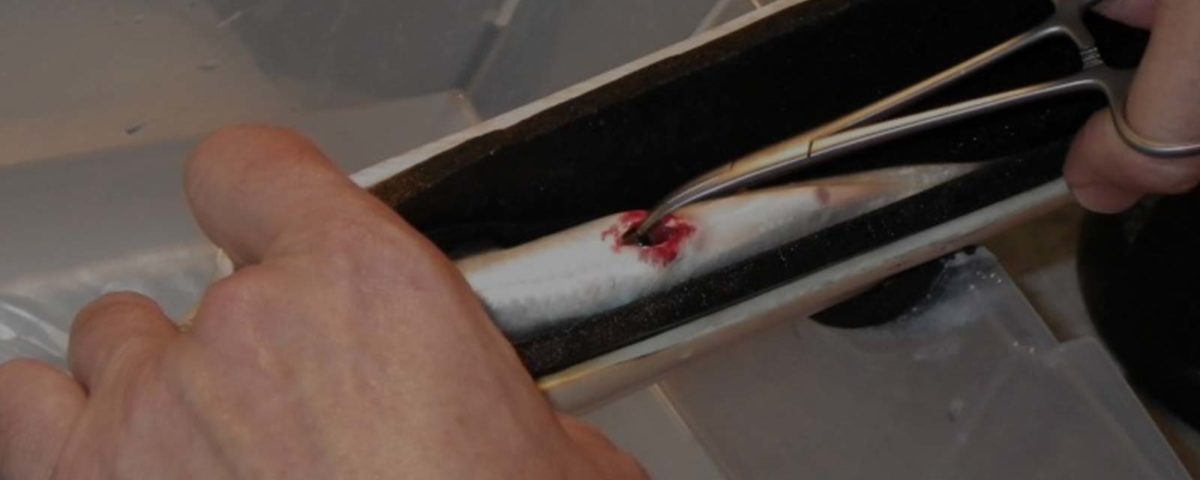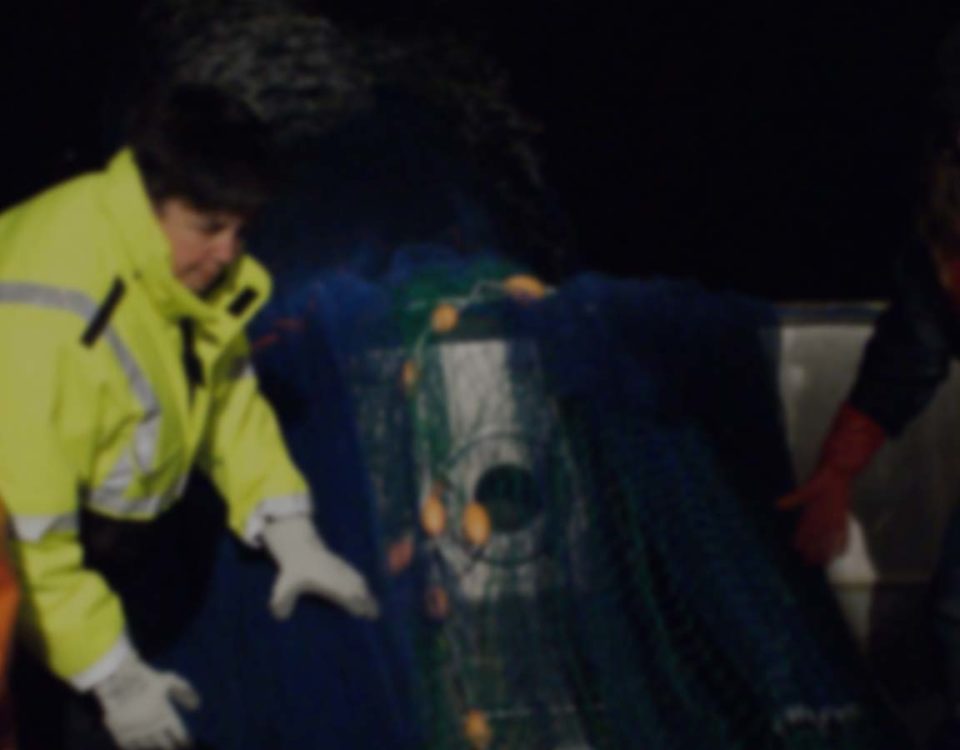Tagging and tracking herring

PROJECT
Tagging and tracking herring
Background
Where herring go after spawning in Prince William Sound (PWS) remains a mystery. Do they remain in PWS or migrate out into the Gulf of Alaska? A pilot project that started in 2012 demonstrated it was possible to implant acoustic tags in Pacific herring and then detect them on acoustic arrays as they traveled to the entrances of PWS. Over the last 7 years, we have put together a network of acoustic arrays at key areas around PWS in order to better understand the movement of these critical forage fish.
Methods
With the help of historical knowledge and aerial surveys, researchers set out into PWS in search of herring to tag. Adult herring are captured on the spawning grounds using jigs and transferred to a seawater holding tank aboard a research vessel. Individually, the herring are sedated, measured, and a small acoustic tag is surgically implanted. The tags then transmit pings that can be “heard” by portable hydrophones and groups of acoustic receivers installed in PWS which “listen” for tagged fish. These receivers are placed on the spawning grounds and at the major entrances to PWS including Hinchinbrook Entrance, southern Montague Strait, and the four southwest passages. Receiver data are uploaded once or twice a year. Data collected from the receivers are then pooled into a Multistate Cormack-Jolly-Seber (CJS) Model. Click here for a full report on the locations of PWS acoustic arrays.
What we are learning
We have already learned that after spawning, many adult herring move to the marine passageways between Prince William Sound and the Gulf of Alaska. There is a clear trend at Hinchinbrook entrance with fish moving towards the Gulf of Alaska in spring and summer and returning through Montague straight during fall and winter. Among the acoustic arrays, Hinchinbrook Entrance is the most popular route; it was used by more than 2/3 of the herring tagged in 2019! Montague straight may be used by fewer fish, but the fish that are there appear to remain longer and have better body condition and size than the fish using the Entrance. Preliminary analyses of this migration through Hinchinbrook Entrance into the sound during fall and winter suggests that Orca Bay and/or Port Gravina may support primary herring overwintering areas within PWS, but this is still somewhat of a mystery that we are trying to solve. To aid in this effort additional acoustic receivers were deployed in 2018 & 2019 throughout the Sound in strategic locations (Figure 1). In total, we have acoustic receiver arrays deployed at 14 locations around PWS and we have tagged 726 herring. The next scheduled data upload from the acoustic receivers will be in March 2021. With each year’s data upload, we get a deeper understanding of the paths these herring take. By knowing where the fish are, we can inform and improve the design of other studies in the HRM program that look at factors such as predation, food availability, and stock genetics.![]()
Figure 1. Locations of deployed acoustic receiver arrays in PWS.
DOWNLOAD PROJECT SUMMARY
PRINCIPAL INVESTIGATORS
Mary Anne Bishop, Ph.D.PWS Science Center
mbishop@pwssc.org
RESEARCH PERIOD
2012-2014, 2016-2022FUNDING
Exxon Valdez Trustee CouncilOcean Tracking Network
Alaska Ocean Observing Systems




